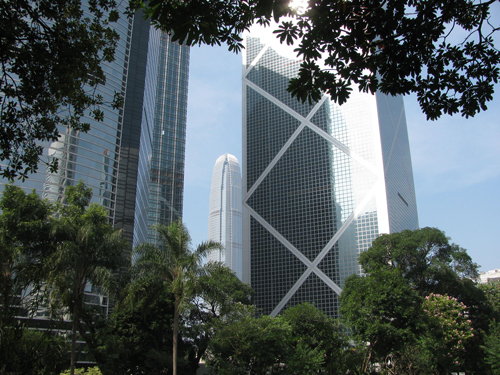Rod MacKenzie looks back on ten years of focus on Hong Kong, and considers the opportunities that still abound in that dynamic market.
Ten years ago NZ Trade & Enterprise embarked on a project to showcase New Zealand products in a store located on Hong Kong’s busy Hennessy Road – a significant departure from its normal modus operandi.
Looking back on that time and comparing it with today, a mere decade later, it’s astonishing to see the change in both New Zealand’s relationship with that part of the world and in Hong Kong itself.
In 2005 the region was grappling with a number of inhibiting issues, not the least of which was figuring out just what being a ‘Special Administrative Region’ actually meant.
The transfer of sovereignty from the United Kingdom to the People’s Republic of China had been in place for eight years but it had been anything but a trouble-free period.
The Asian financial crisis kicked in almost at the same time as the handover and while it was not confined to Hong Kong it certainly had a compounding impact on its already queasy commercial sector. The outbreak of severe acute respiratory syndrome (SARS) in 2003 and the lingering uncertainty of whether avian flu was the next bubonic plague added further to the general malaise. A housing crisis which saw property prices fall dramatically, often wiping out any equity the owners had, and discontent with the Legislative Council (LegCo) and its leader resulted in mass demonstrations and the eventual resignation of several senior ministers.
As an export market for New Zealand, Hong Kong ranked in the top 12 but trade was pedestrian and static. The ‘usual suspects’ in New Zealand’s export scene were there – dairy and meat principally – but the higher value and more innovative products were going to other parts of the world.
It was into this environment that NZTE launched its brand ‘New Zealand Focus’ and plastered it over the façade of a leased building on the fringe of Causeway Bay. The aim was to offer New Zealand companies a relatively risk-free introduction to the market, avoiding punitive listing fees and promotional charges from conventional retailers.
If a product resonated through the NZ Focus store then it could be taken with more confidence into mainstream retail.
The store featured three distinct areas – a ground-floor retail operation (predominantly food and beverages and health products); an education advisory centre; and a showroom and event area for Fisher & Paykel Appliances.
Ten years later the brand survives as a fully commercial entity, after F&P became a wholly-owned Chinese company and, for reasons that are still puzzling, the education promotion agency decided that Hong Kong was no longer a priority market (and still isn’t).
The resurgence of the economy in Hong Kong was also signaled by the landlord of the property attempting to triple the lease on its first review – an issue confronting every retailer in the region to this day.
Hong Kong in 2015
Contrast the Hong Kong of 2005 with that of today and the transformation is barely believable. Property prices are sky-high again; the financial services sector is back with a vengeance. A flood of mainland Chinese visitors, well over a million every month, has more than restored the retail and services sectors. Certainly there remains a deeply rooted mistrust of Beijing and its intentions towards Hong Kong but the inconvenience of getting around the streets during the sit-ins does little to stem the growth of the economy or affect the region’s importance as a commercial hub.
New Zealand’s visible presence has grown significantly with product categories such as wine, honey and health products heavily represented. Connection between Hong Kong and New Zealand has been enhanced by increases in flights by the two major carriers, Air New Zealand and Cathay Pacific creating more opportunities for airfreight as well as tourism. And the FTA signed with the PRC at a time when other export markets were declining has heightened Hong Kong’s importance to New Zealand as a potential conduit into the much larger mainland markets.
Yet, to me at least, Hong Kong still feels under-cooked as a market for New Zealand. Superficially it has everything you could want. It is certainly accessible from the perspectives of travel, freight and the absence of tariffs. A market size, that’s not too unfamiliar to New Zealanders, of about seven million people and a legal and business environment that has none of the eccentricities to be found across the border.
There are also some outstanding examples of what can be done in Hong Kong. Comvita is the most obvious example with its hundreds of retail outlets around the region; and you would be hard pressed to find a restaurant wine list in Hong Kong that doesn’t feature New Zealand wine.
But walk into an upmarket supermarket such as Marketplace by Jasons, or Threesixty, and you are still scratching around for some of the higher value primary products from New Zealand. Or go looking for some of the finer skin care and health products that New Zealand produces and you will be overwhelmed with European brands instead.
I believe there is a real opportunity for New Zealand to take greater advantage of the market conditions in Hong Kong, particularly if it were possible to create an enduring collaboration between some of our more innovative and creative consumer brands.




